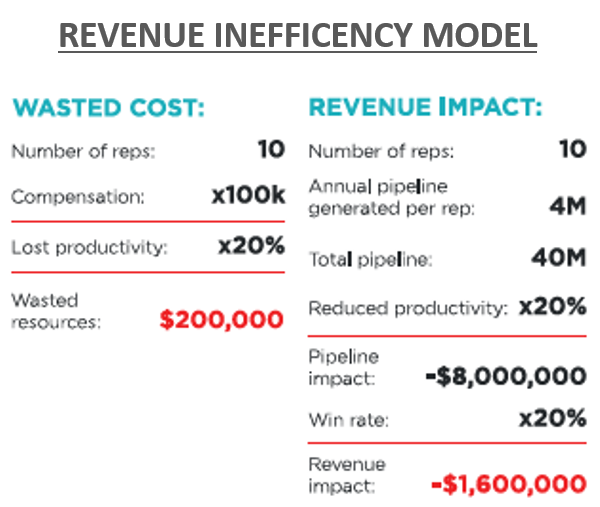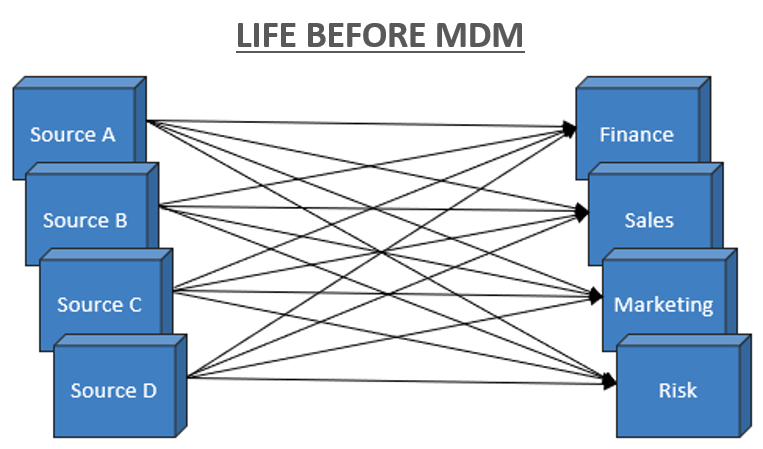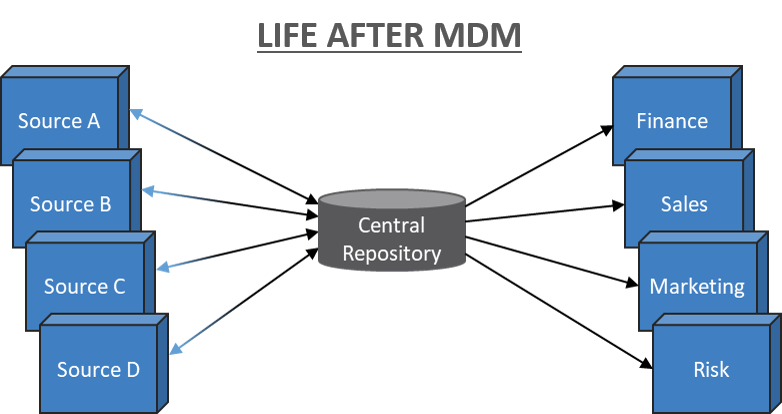Data Management – An Imperative in Today’s Environment and Beyond

Just when businesses thought they were ahead of the game, disruption threw yet another curveball.
The coronavirus pandemic has radically changed demand for products and services in every sector, exposing weaknesses and fragility in global supply chains, service networks, operations and IT capabilities. Nevertheless, while unprecedented levels of uncertainty bring challenges, they also bring opportunities.
It has been striking how well and how fast many companies have adapted during this time, achieving new levels of visibility, agility, productivity and end-user connectivity. While there is much credence to be lent to the organizational, operational and cultural characteristics of organizations that have been able to successfully adapt to our new normal, it is organizations with the greatest alignment between sales, marketing and product teams, as well as access to clean, accurate, timely customer data that have been able to capitalize most effectively on rapidly changing consumer demands and trends in the current economic landscape. In short, companies with the most robust data management capabilities have been able to protect, generate and capture more value than their counterparts by nearly every measure in recent months, and a very timely study supports this thesis. On June 9, 2020, InsideView, a leader in business-to-business (B2B) research and intelligence, announced the results of its third sales and marketing alignment report, Unlocking Revenue Performance in the New Normal, based on a survey of more than 400 global sales, marketing and operations leaders. The study was conducted in February and March 2020, just as the international shelter-in-place policies and economic downturns began to spread across the globe, and the results were humbling.
We are all familiar with the benefits of well-aligned sales organizations: better targeting, more effective sales teams, higher win rates, sustainable competitive advantages, greater responsiveness, agility and more. We are also familiar with how too many companies claim to aspire to alignment yet continue to do little to achieve it, especially when it comes to the customer data foundation upon which nearly all sales and marketing activities are built.
This year, according to InsideView’s research, three facts remain crystal clear for a majority of companies:
- Your sales and marketing data is a mess.
- You know you need to fix it.
- But you don’t have a plan to fix it.
Nothing underscores this point more than the disconnect between those who said data is a high priority (71%) and those who admitted to doing little or nothing to keep it clean (80%). Although a promising 41% of respondents claimed to perform manual maintenance based on data governance rules, a reasonable assumption can be made that these respondents are doing the bare minimum and are in the relatively early-maturity stages of their data governance and data management journeys. Furthermore, while performing offline data cleansing services 1-2 times per year is certainly helpful, it is far too infrequent to facilitate accurate data-driven decision-making on a consistent basis.
So, why the gap? Before exploring why it’s important to overcome the barriers to alignment, let’s first explore how much poor data quality is costing us.
The Cost of Poor Data Quality
A 2019 survey by CSO Insights found that up to 27% of salespeople’s time can be wasted due to bad data: pursuing low-quality leads, fixing reports, investigating mismatched leads, and so on. How costly is this lost efficiency? Let’s start with a simple exercise and take a more conservative estimate that 20% of salespeople’s productivity is lost due to poor data quality.
Imagine you work for an organization with 10 sales development representatives (SDRs) who are each paid $100,000 and generate, on average, $4 million to the sales pipeline per year. Let’s further assume that your organization’s average win rate is 20%. Using these assumptions, the impacts to your organization’s top and bottom lines are undeniable.
In our example, the total cost of wasted resources and lost revenue is $1,800,000 which, on its own, should be more than enough to spur action. However, this is just the directly measurable financial impact.
What about the regulatory risks and penalties you’ll be charged if you aren’t able to provide regulators with clean, accurate customer data or if you aren’t able to comply with customers’ right to be forgotten? What about the reputational damage when a salesperson makes a prospecting call to an existing client, the day after their relationship manager made a similar call? What about the prolonged sales cycle and inability to up- and cross-sell to current customers? What about the inability to personalize the customer experience, predict churn rates, and extend customers’ lifetime values? The list of costs, risks and uncaptured revenue quickly mushrooms.
Let’s refer to our example once more. We assumed you worked for a company with 10 SDRs, but what if you worked for a company with 100, 500, or 1,000+ SDRs? Even if you estimate only a 5-10% loss of productivity as a result of poor data quality – meaning, your SDRs spend a respectable 90-95% of their time unencumbered by bad data – the costs of wasted resources and foregone revenue remain substantially and undeniably high.
I encourage you to use your own company’s figures and participate in the exercise above. You will likely find that your results are more than enough to justify an investment in improving data management capabilities. In fact, in 2017, Gartner measured the average financial impact of poor data on businesses to be $9.7 million per year.
So, why haven’t you made the investment? You understand the costs associated with poor data management, but are you aware of the benefits of establishing a robust data management environment?
The Benefits of Robust Data Management
As we discussed earlier, while unprecedented levels of uncertainty bring challenges, they also bring opportunities. Following the short-term mitigative efforts to protect resources and preserve liquidity during a crisis, business leaders are afforded the rare opportunity to critically assess the returns of historical, current and future investments with new perspectives and a heightened sense of clarity.
One such competency that many business leaders have scrutinized recently and identified as an opportunity for improvement as a result of COVID-19 has been their organizations’ data management capabilities. Not only does robust data management enable corporations to navigate times of tremendous uncertainty, it allows data-driven decision-making to continue during times of economic recovery and expansion – two critical phases of the economic cycle that serve as optimal periods of time for organizations to generate growth and capture market share.
To be clear, although robust data management will assist companies tremendously when steering through crises, its value may be greatest (and likely the most underappreciated) during times of economic expansion when complacency is easily hidden by the shadows of growing profits, only to be revealed once the next crisis arrives. One would hope that his/her organization has spent the most recent expansion with prudence and haste: investing in data management, diligently capturing market share and positioning itself to capitalize on gaps left in the market by competitors in the next downturn.
Before we explore the financial and operational benefits of mature data management, let’s illustrate data management and visualize how it can produce benefits from a practical perspective. Below is an example of master data management (MDM), in which three separate records exist for the same customer. These records may have been generated by three different entities – an internal employee, a third-party vendor and a manufacturer, for example – in varying source systems. By cleansing, validating and consolidating the records with match/merge capabilities and preferred attributes determined by business members, we can create a single golden record for the customer.
Immediately, we begin to viscerally understand the vast benefits of maintaining a robust data management strategy. In our pictorial example, with each department now sourcing its data from the same central repository, a number of business outcomes can be realized, ranging from reduced risks and costs, to enhanced customer experiences and increased revenues, to improved technology scalability.
Reduced Risks and Costs
- Maintenance and rework efforts decrease, lowering overall costs.
- Regulatory risk decreases as a result of improved completeness and accuracy of holistic customer data.
- Reputational risk is mitigated due to aligned and consistent messaging to customers.
- Productivity of teams and effectiveness of marketing campaigns are enhanced.
Enhanced Customer Experiences and Increased Revenues
- Advanced analytics can be employed to identify opportunities for up- and cross-selling.
- Sales cycles are reduced, and pipelines are replenished more quickly.
- Customer experiences are personalized by offering tailored products and services at the appropriate times.
- Churn rates are predicted, and new products or services are preemptively offered to customers to extend their lifetime values.
- Trends are analyzed to identify new markets or expand within existing markets.
Improved Strategic Scalability
- Treating data as an asset rather than a burden serves as the foundation for growing IT capabilities.
- The value of data will grow exponentially as sources are added, resulting in a “data quality network effect” (e.g., value of mastered product and customer data > value of product data + value of customer data).
- Clean, accurate and well-maintained data enables the application of advanced analytics and dashboards to further improve decision-making.
- Mastered data allows for more effective installations of CRM platforms.
It is important to note that these benefits are not mutually exclusive. Rather, they can be, and often are, achieved simultaneously. As a result of improved data integrity, departments spend less time generating, deciphering and validating reports and more time prospecting, servicing existing clients and discovering novel insights, thereby reducing costs, improving understanding and increasing revenues. While customer service representatives begin to more effectively personalize the customer experience, the risk of reputational damage decreases, and customer lifetime values increase.
It is no wonder SiriusDecisions found that when sales, marketing and product departments are well-aligned on customer data, organizations experience 19% faster revenue growth and 15% higher profitability.
What to Do
Thus far, we have explored data management in today’s environment, the costs of misalignment and poor data quality, and the benefits of mature data management. However, it would be naïve and misleading to illustrate robust data management as the sole ingredient to achieving the ever-desired state of organizational utopia in which all decisions are made with perfectly complete and accurate data. Rather, there is no perfect utopia.
Data management is an ongoing journey of iterative improvement that requires continuous learning and commitment – commitment not only to desired business outcomes, but to one another. Data management does not exist in a vacuum, and it is not solely IT’s responsibility. It is reliant on both the business and IT collaborating to build a broader ecosystem in which data is treated as an asset, and both parties participate to govern data policies, procedures and quality controls to steward data through creation, ingestion, maintenance and consumption.
Alas, where to begin? Embarking on the journey I’ve described can seem daunting. Whether it’s not knowing where to start, doubting the validity of the aforementioned benefits due to previously failed investments or fearing little progress can be made due to internal politics or lack of expertise, the uncertainty can seem overwhelming. But just as the challenges of COVID-19 seemed overwhelming, you were able to overcome them, and likely did so by partnering with colleagues and working as a team to venture into new and uncharted territory. I recommend the same approach here.
Take it from us. Not only has Kenway successfully partnered with clients to help them along their data management journeys, but we’ve embarked on our own journey and learned countless lessons along the way. Rather than duplicating effort and facing this uncharted territory alone, let us help and share with you what we’ve learned.
Now, back to that question of “Where to begin?” If you’re willing to take the leap, let’s start with a conversation. Connect with me on LinkedIn or email me directly at Luke.Otto@kenwayconsulting.com. I’d love to talk.












